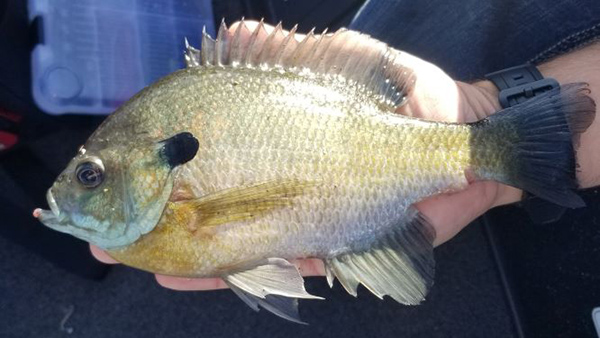By Louie Stout
 Bluegills and Bass Populations Closely Related
Bluegills and Bass Populations Closely Related
A few years ago, the Indiana DNR put a bluegill bag limit up for debate after a survey revealed that 60 percent of the state’s anglers felt one was necessary.
Indiana hasn’t had a bluegill bag limit in years. You can keep as many as you wish and quite a few anglers were doing just that.
More conservative anglers felt that Hoosiers needed to limit the number of big gills hauled from a lake and blamed diminishing quality on the “fish hogs” they perceived were over harvesting and hurting bluegill populations.
They pointed out that Michigan has a 25-fish daily limit and felt that state offered better bluegill fishing because of it.
On the surface, their argument made sense. When you have a lot of pressure on the “keeper-size” bluegills, such as when they are bedding and extremely vulnerable to angler tactics, the adult population can be reduced substantially and a lake is left with a lot of small bluegill.
So, the DNR proposed 25-fish bag daily limit regulation change and put it up for public comment.
That plan didn’t go far when it was learned that the wording in the proposed bag limit had no provisions for a higher possession limit – the number of ‘gills you can keep in your freezer – and that hurt tourists who come to Indiana to fill their coolers to take fish home.
Possession laws were changed to give those tourists more freedom, but the bag limit has remained in exile. In the interim, the DNR decided more studies were needed. Several biologists have long believed a bag limit is more of a social issue than biological need. Studies were required to determine whether a bag limit is needed or if it might actually hurt fishing on some lakes.
Those plans are ongoing.
In the interim, review of studies conducted on natural lakes during the past 30 years show Indiana now has as many, if not more, big bluegills as the state has ever hand.
“Based upon studies conducted on 78 natural lakes over the years, the numbers of small bluegills appear to be decreasing and big bluegills are increasing,” said northern Indiana biologist Jed Pearson. “Trends show the numbers of 6-inch bluegills staying the same and a gradual increase in 8 inchers.”
Pearson, who has been poring over bass studies and numbers, believes there’s a direct correlation in the increase in bass numbers and the improvement of bluegill fishing.
As noted in last week’s column, DNR data shows there are two to three times more bass in our lakes as there were 30 years ago due to catch-and-release practices and increases in size limits.
“This bluegill improvement could be a function of having more bass in our lakes,” Pearson noted.
In case you find that confusing, remember that bluegill are prolific spawners and that bass eat bluegills. When more bass are munching on the abundant and smaller bluegills, panfish survivors have more food at their disposal and grow faster.
In last week’s column about bass, Pearson said that the research also shows some of the lakes with high numbers of bass also have a low number of quality bass. That’s making some biologists wonder if there shouldn’t be some tweaking in bass regulations to reduce numbers of smaller bass and promote faster growth.
But if they did that, would it have a negative impact on bluegill fishing?
That’s a question that can only be answered with more in-depth research.
Of course, to get to that point it would be helpful to know how many bass and bluegills are actually being harvested from each lake. Some lakes get more fishing/harvest pressure than others.
Indiana has moved away from doing creel surveys – putting an employee on a lake to count and measure each fish anglers catch – but this is one of those situations where it might be warranted.
After all, bluegills and bass historically have ranked one-two as Indiana’s most popular fish. And since the two species are connected biologically, a concentrated research project seems only logical but necessary.


